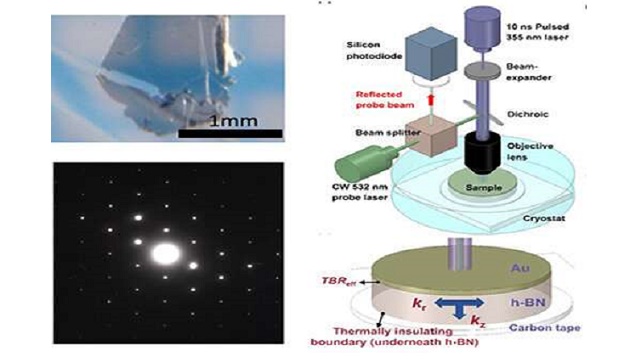A successful demonstration of high thermal conductivity of a new material, has been done by the Researchers of Bristol. The demonstration will make electronic devices safer and more efficient, including mobile phones, radars and electric cars.
At the Center for Device Thermography and Reliability (CDTR), Professor Martin Kuball and his team found that by making an ultra-pure version of Boron Nitride, it was possible to demonstrate its thermal conductivity potential for the first time, which at 550W/mk is twice that of copper.
“Most semiconductor electronics heat up when used. The hotter they get, the greater the rate at which they degrade, and their performance diminishes. As we rely more and more upon our electronic devices, it becomes increasingly important to find materials with high thermal conductivity which can extract waste heat,” said Professor Kuball.
“Boron Nitride is one such material which was predicted to have a thermal conductivity of 550 W/mK, twice that of copper. However, all measurements to date seemed to show its thermal conductivity was much lower. Excitingly, by making this material ‘ultra-pure’, we have been able to demonstrate for the first time its very high thermal conductivity potential,” he added.
“In demonstrating the potential of ultra-pure Boron Nitride, we now have a material that can be used in the near future to create high performance, high energy efficiency electronics.The implications of this discovery are significant. Certainly, our reliance on electronics is only going to increase, along with our use of mobile phones and adoption of electric cars. Using more efficient materials, like Boron Nitride, to satisfy these demands will lead to better performance mobile phone communication networks, safer transportation and ultimately, fewer power stations.”








